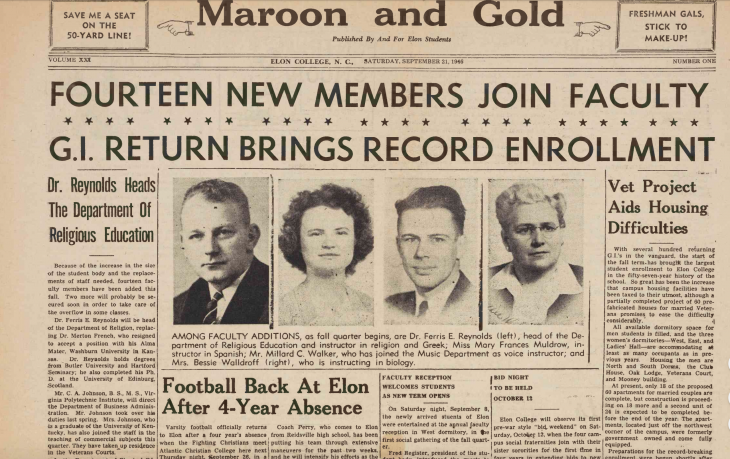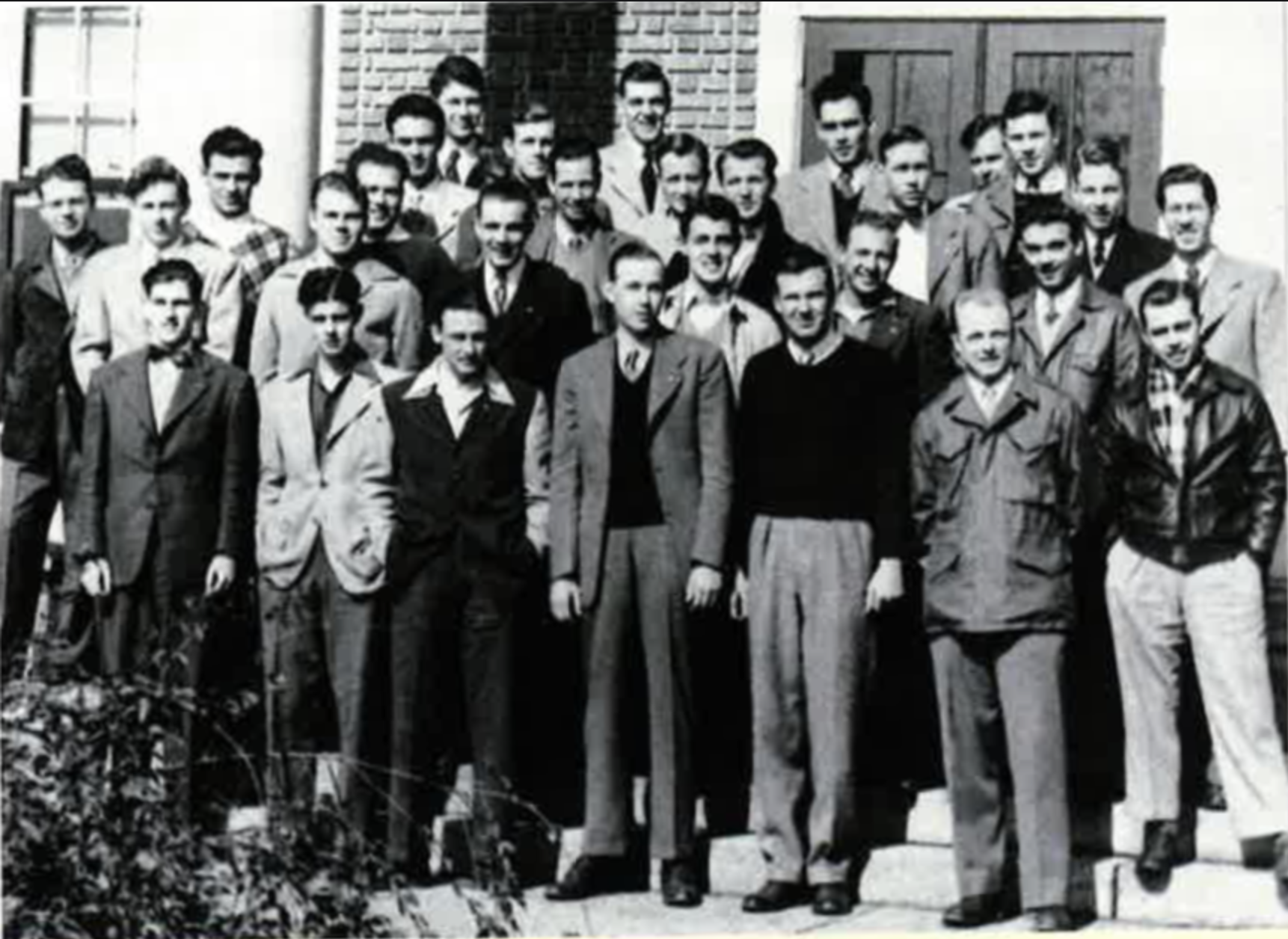In this edition of #ElonTBT, we look back at a special organization for veterans who returned to campus following the second World War.
In the #ElonTBT series, the Elon University News Bureau, along with Archives & Special Collections, will flash back to the past to take a look at Elon over the years. You will find videos, newspaper clippings, photos and more to celebrate Elon’s past, while looking ahead to the future. Follow along on Today at Elon and the university’s Twitter, Facebook and Instagram pages every Thursday to see what we dig up.
Following World War II, Elon saw a surge in enrollment like never before as veterans who left school to fight in the war returned to campus to continue their education.
As the late University Historian George Troxler wrote in “From a Grove of Oaks: The Story of Elon University,” Elon’s veterans returned to a changing campus. “Students no longer had assigned seats at the dining hall, and meals in the dining hall were served cafeteria style. Attendance at church and chapel, however, still was required,” Troxler wrote.
With the changes at Elon and the war behind them, returning veterans found themselves in need of a community. During the 1945-46 academic year, campus veterans organized a new club: the Association of Veterans of Elon College. The club began with 22 members and eventually became one of the largest and most active groups on campus.

AVEC offered discussions, banquets and other social gatherings to help veterans and their families connect with each other on campus. The goal, according to the Dec. 8, 1945, edition of the Maroon and Gold student newspaper, was “to foster a spirit of unity and accord among the veterans, to promote an active social program, and to keep the members of their organization informed on all matters pertaining to their interest and welfare.”
The club would become increasingly important as the community of veterans on campus continued to grow with the passage of the Servicemen’s Readjustment Act in 1944. The act, better known as the G.I. Bill, in part offered veterans the chance to receive an education after the war by paying the cost of tuition, books and supplies for up to four years for World War II veterans.
Because of the G.I. Bill, Elon’s enrollment increased from 428 students in September 1945 to 517 students in February 1946, with 80 of those new students being veterans. “With several hundred returning G.I.s in the vanguard, the start of the fall term has brought the largest student enrollment to Elon College in the fifty-seven-year history of the school,” read the front page of the Sept. 21, 1946, edition of the newspaper.

Elon’s campus would soon require special housing to accommodate all of its veterans and their families. In 1947, the Federal Housing Authority constructed 66 veterans apartments, featuring one, two or three bedrooms, for World War II veterans and their families. The apartments offered veterans affordable housing, only charging tenants the cost of utilities and maintenance.
The location is now home to Elon’s Oaks residential neighborhood.
Today, Elon continues to celebrate veterans in the university community and beyond. On Nov. 11, the university will host the annual Veterans Day Observance ceremony at LaRose Digital Theatre inside the Martha and Spencer Love School of Business. The ceremony, which honors veterans with ties to the Elon community, begins at 10:55 a.m.
Do you have any special pieces of Elon history? Share your photos and videos with us via email at news@elon.edu or using the hashtag #ElonTBT on Twitter, Facebook and Instagram.



